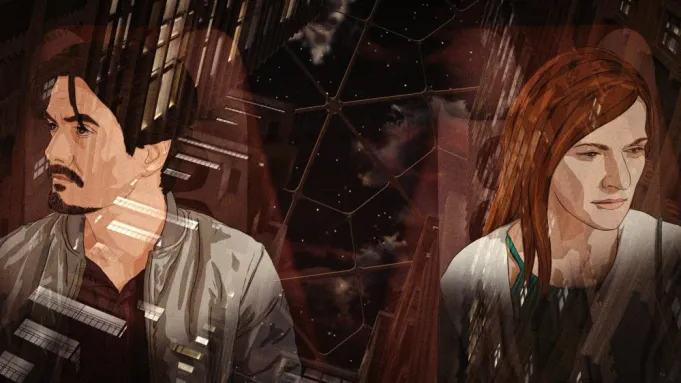In the realm of imaginative and thought-provoking cinema, “White Plastic Sky,” brought to life by animators Tibor Bánóczki and Sarolta Szabó, emerges as a captivating metaphysical journey intertwined with a ticking-clock quest against a mesmerizingly dystopian backdrop. The film, slated for release, ventures into uncharted territories of human emotion and existential contemplation, offering audiences a unique experience that lingers long after the credits roll.
The visionary filmmakers have woven a tale set in a desiccated, infertile dystopia, a bleak future that eerily resonates with our current environmental concerns. The film’s setting in the year 2123, not too distant from our present, offers a stark reminder of the consequences of unchecked environmental degradation. The barren landscapes, reminiscent of Mars with rusted ship remnants jutting from arid lakebeds, serve as haunting visual metaphors for the impending consequences of our actions. In a world hurtling towards environmental collapse, “White Plastic Sky” paints a poignant yet eerily plausible picture.
Yet, as the backdrop of desolation engulfs the narrative, a unique animation style comes into play. The characters, though somnolent and less expressive, stand in stark contrast to the meticulously detailed, vanishing-point backgrounds. The film’s animation style serves as a powerful tool to convey the internal struggles of the characters as they grapple with love, life, and their own humanity.
In this future world, human existence is limited to massive domed cities like Budapest. Resources are scarce, and life expectancy has been truncated to a mere 50 years due to environmental challenges. At the age of 50, individuals undergo a transformation, turning into trees that bear edible leaves, sustaining the next generation of humans. Bánóczki and Szabó’s screenplay delves into the intricacies of biochemistry and environmental engineering, crafting a scientifically plausible premise that fuels the film’s central conflict.
However, the apparent tranquility of this society poses intriguing questions. In a world where even wearing a mask stirred controversy, the idea of a population willingly accepting a dramatically shortened lifespan seems incredulous. This societal docility adds layers of complexity to a narrative already exploring themes of transformation, sacrifice, and the resilience of the human spirit.
The film follows Stefan (Tamás Keresztes), a psychologist in a society where he aids individuals in embracing their impending fate. When Stefan’s wife Nora (Zsófia Szamosi) chooses to undergo the transformative procedure ahead of time, the film morphs into an existential odyssey. Stefan embarks on a quest to rescue Nora, enlisting a renegade scientist to undo the process. The film’s essence transforms into a philosophical video game, blending existential exploration with a race against time.
“White Plastic Sky” melds elements of classics like “Soylent Green” and “Logan’s Run,” but it stands apart by delving into metaphysical mysteries, particularly the enigma of love and its transcendent power. As Stefan and Nora navigate the dystopian landscape outside the dome, their emotional journey becomes a focal point. The film’s brilliance lies in capturing these ordinary yet deeply profound moments of reconnection.
Rotoscoping, the animation technique employed, contributes to the film’s unique aesthetic. Reality is reduced to stark outlines, mirroring the characters’ detachment from their own bodies in a society where life is merely a temporary lease. However, this technique can also create a slight emotional distance, despite the film’s resonant themes.
As “White Plastic Sky” culminates, it draws parallels to Darren Aronofsky’s “The Fountain,” suggesting that love possesses the power to transcend even the darkest corners of existence. The film encourages contemplation of our own humanity and the fragile balance between progress and preservation.
In a cinematic landscape often dominated by formulaic narratives, “White Plastic Sky” emerges as a brave exploration of the unknown. Bánóczki and Szabó have crafted an introspective journey that challenges perceptions and invites audiences to delve into the intricate web of human connection, love, and the profound mysteries of existence.
